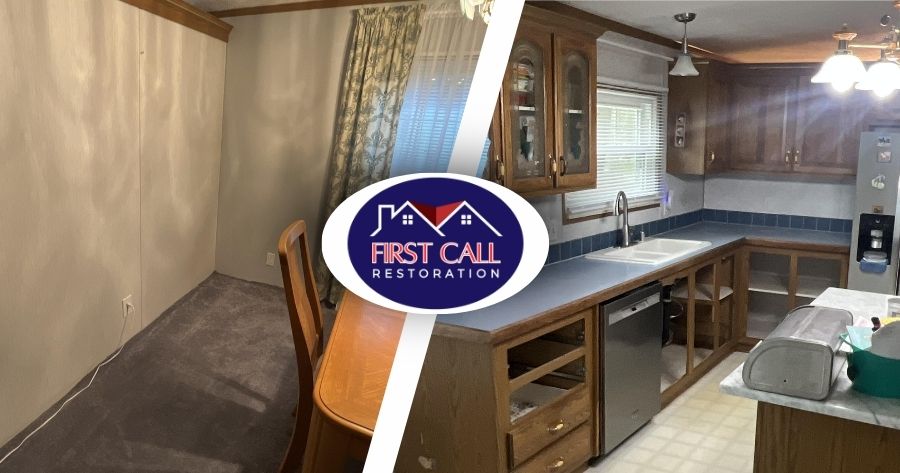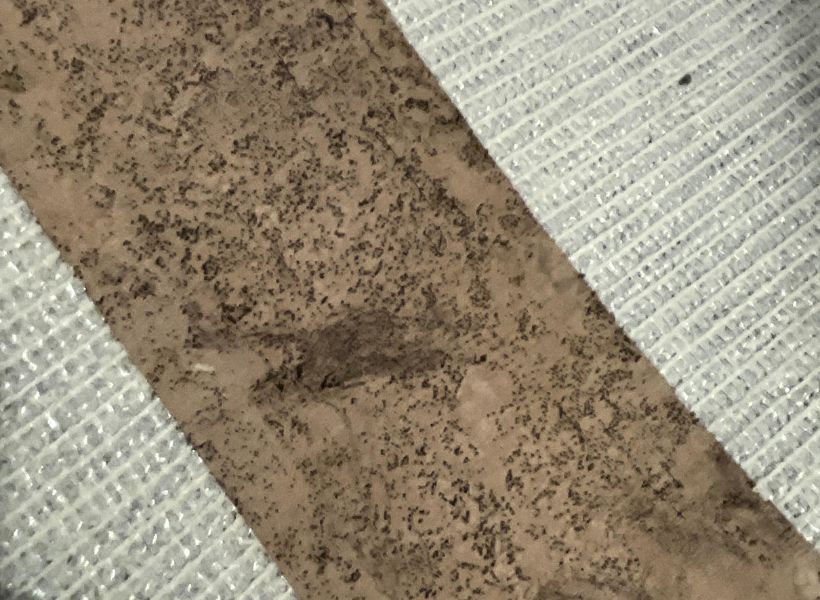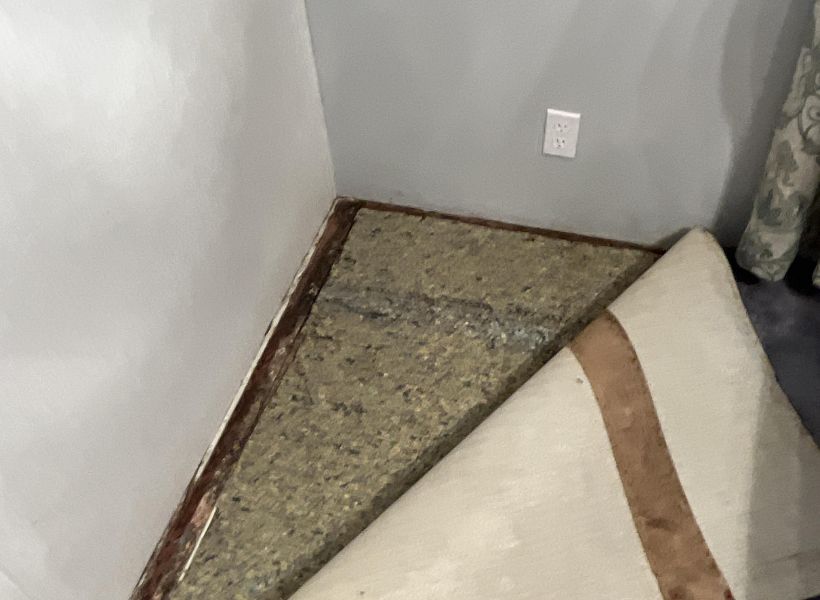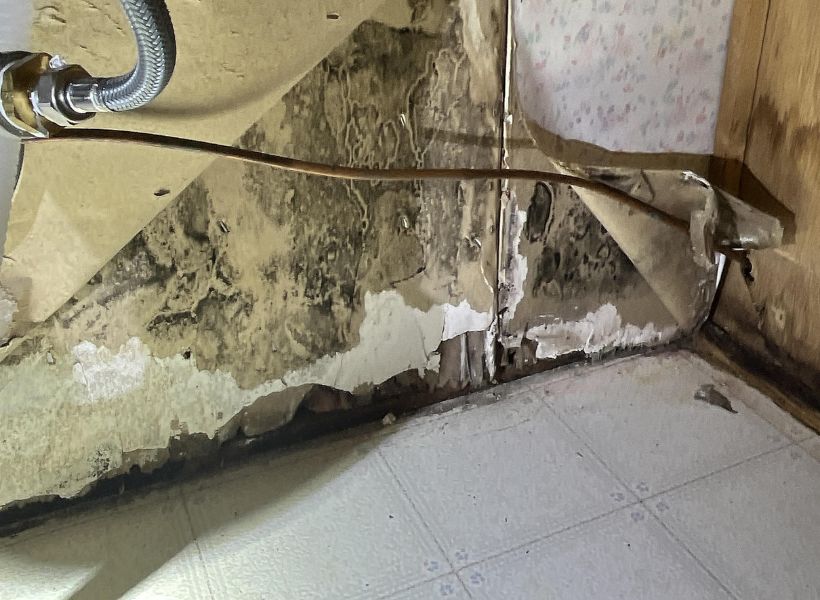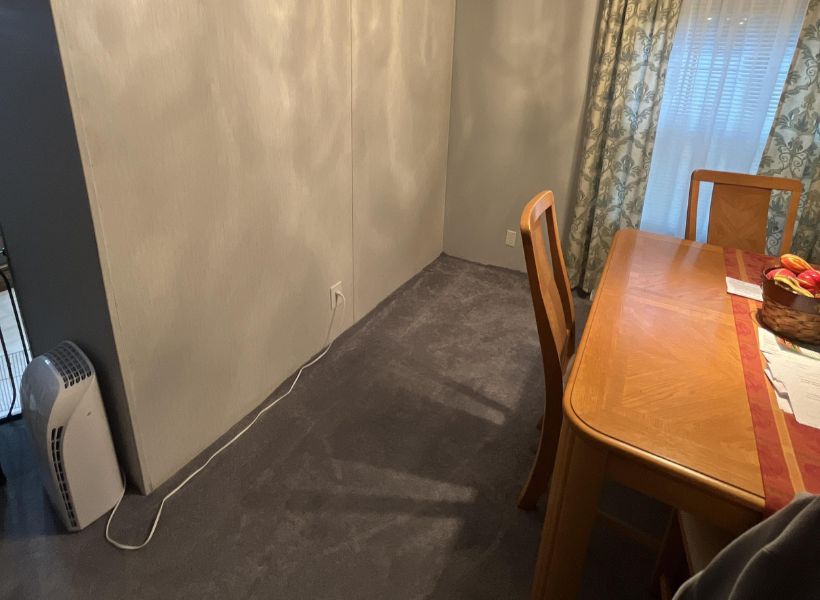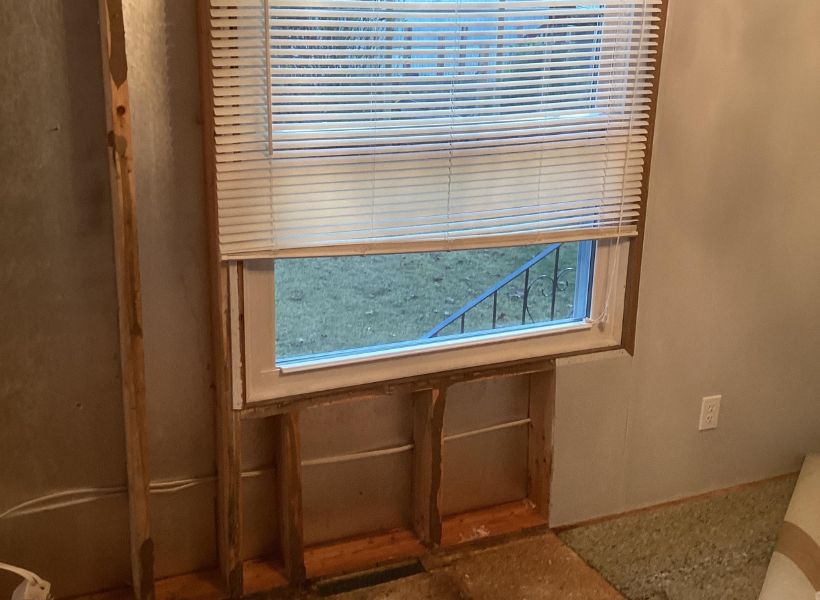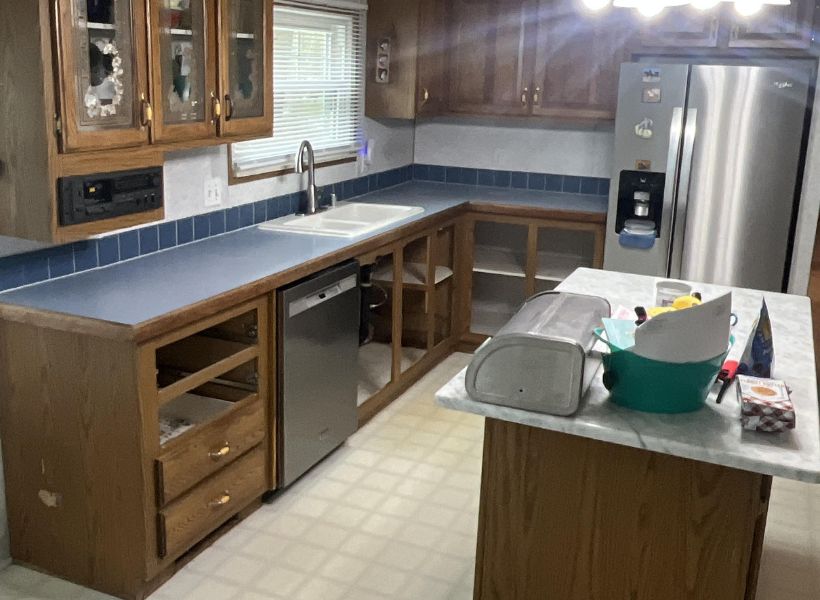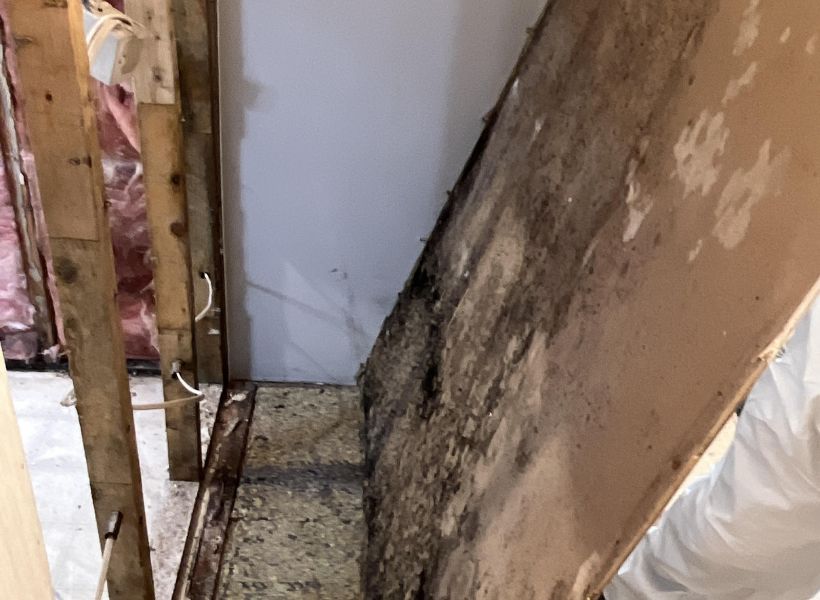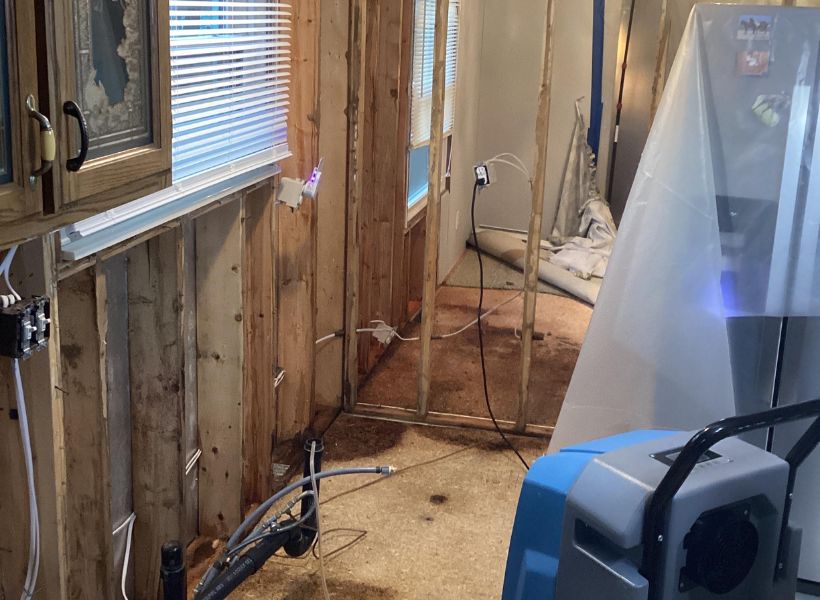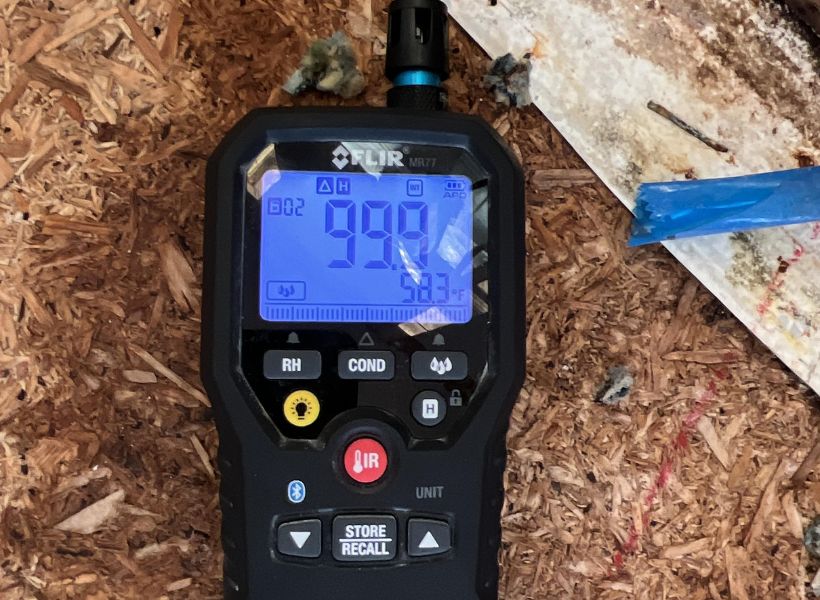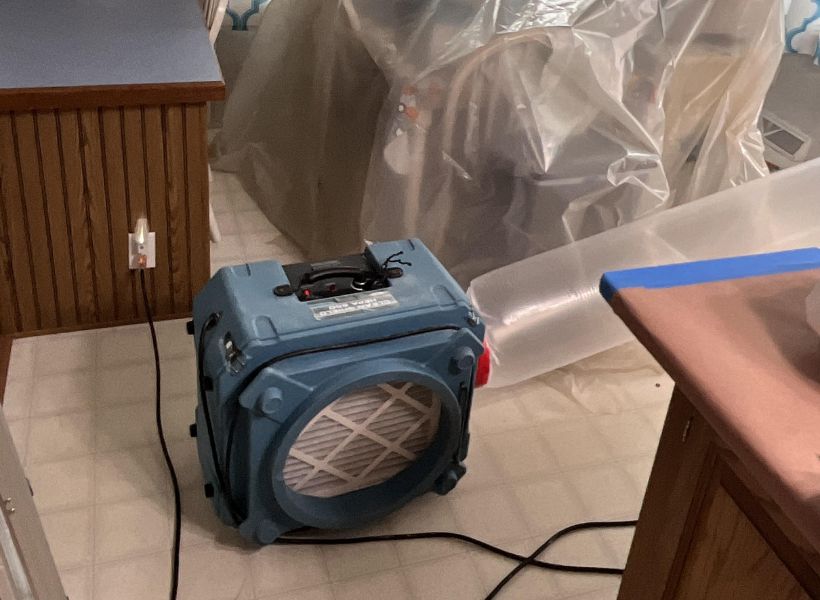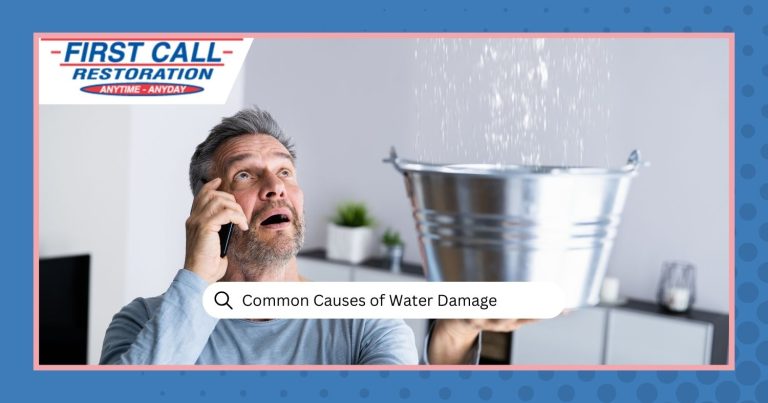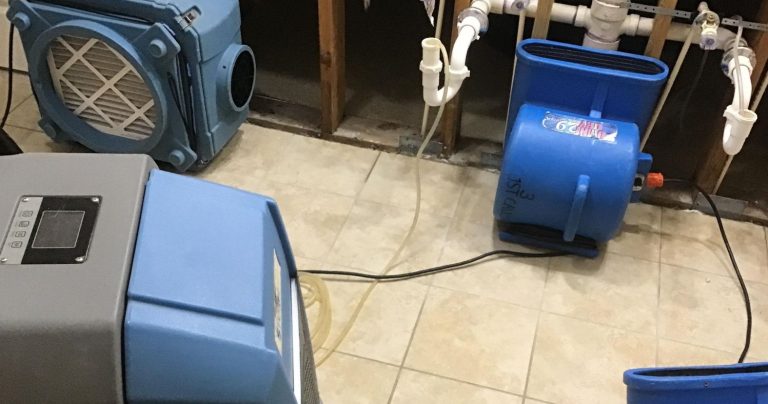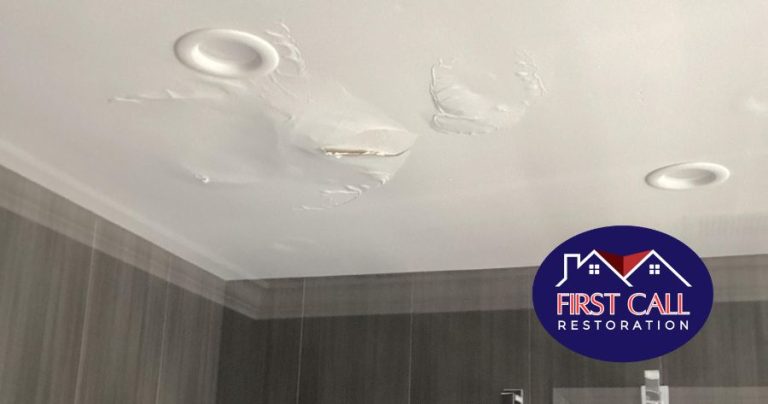Table of Contents
ToggleAt First Call Restoration, we understand the stress and inconvenience that water damage can cause. Recently, we were called to a residential home to perform water mitigation and mold remediation in Hyde Park, NY. The affected areas were the kitchen and dining room, where the homeowner had discovered extensive water damage.
First Look at Damaged Kitchen and Dining Room
When we arrived, our team assessed the damage and using a moisture meter confirmed that the water had affected the carpeting, subfloor, drywall, lower cabinets, trim, and tile on the back wall of the cabinets. We explained to the homeowner the steps we would take to restore their home.
Our Well-Planned Step-by-Step Process
We followed a detailed and well-planned process to make sure that water damage and mold were successfully mitigated. Here is a detailed look at the steps we took during this project:
Setting Up Equipment
Our first priority was to set up a negative air machine. This important piece of equipment helps control the spread of dust and mold spores, maintaining air quality and maintaining a safe working environment.
Initial Preparation and Material Removal
Before proceeding with water mitigation and mold remediation, our team at First Call Restoration undertook preparation and initial steps to ensure successful restoration. Here’s how we proceeded:
- Removing Trim and Tile: Initially, we removed all trim and tile from the back wall of the cabinets. This important step allowed us to assess the full extent of damage and determine the spread of water and mold.
- Discarding Lower Cabinets: After that, we carefully removed and disposed of lower cabinets affected by water and mold. This was essential to access and treat hidden areas behind and beneath the cabinets, guaranteeing thorough remediation.
- Removing Affected Drywall: We then started removing the drywall that showed visible mold growth. As we worked, we discovered more mold than initially expected. We removed additional affected drywall, making sure no mold was left behind.
- Tackling the Subfloor and Carpeting: We peeled back the carpet to reveal the carpet pad, which was heavily infested with mold and needed to be discarded. This step exposed mold on the subfloor, which we treated to prevent future growth.
HEPA Vacuuming and Final Cleaning
To eliminate any remaining mold spores, we used a HEPA vacuum on all affected areas. This specialized vacuum captures tiny particles that ordinary vacuums might miss. We then performed a final clean and applied an antimicrobial solution, to disinfect the surfaces and secure a mold-free environment.
Setting Up Drying Equipment
Finally, we set up drying equipment to make sure that all areas were thoroughly dried. We strategically placed dehumidifiers throughout the area to extract excess moisture from the air and surfaces. Proper drying prevents further mold growth and helps restore the affected areas to their original condition.
Discarding Damaged Materials
Throughout the process, we carefully discarded all damaged materials, including mold-infested drywall, cabinets, and carpeting.
Client’s Satisfaction
The homeowner was extremely satisfied with the results of our work. They appreciated our professionalism, attention to detail, and clear communication throughout the process. They were especially relieved by how quickly we responded and the efficiency with which we completed the job.
Contact First Call Restoration for Help With All Your Water Damage Issues
Facing water damage on your property? First Call Restoration is here to help. Our expert team specializes in quick and thorough water mitigation and mold removal services. Whether it’s a small leak or a major flood, we’re equipped to handle it all. Don’t wait – contact us today at (845) 442-6714 or fill out an online form on our website.
